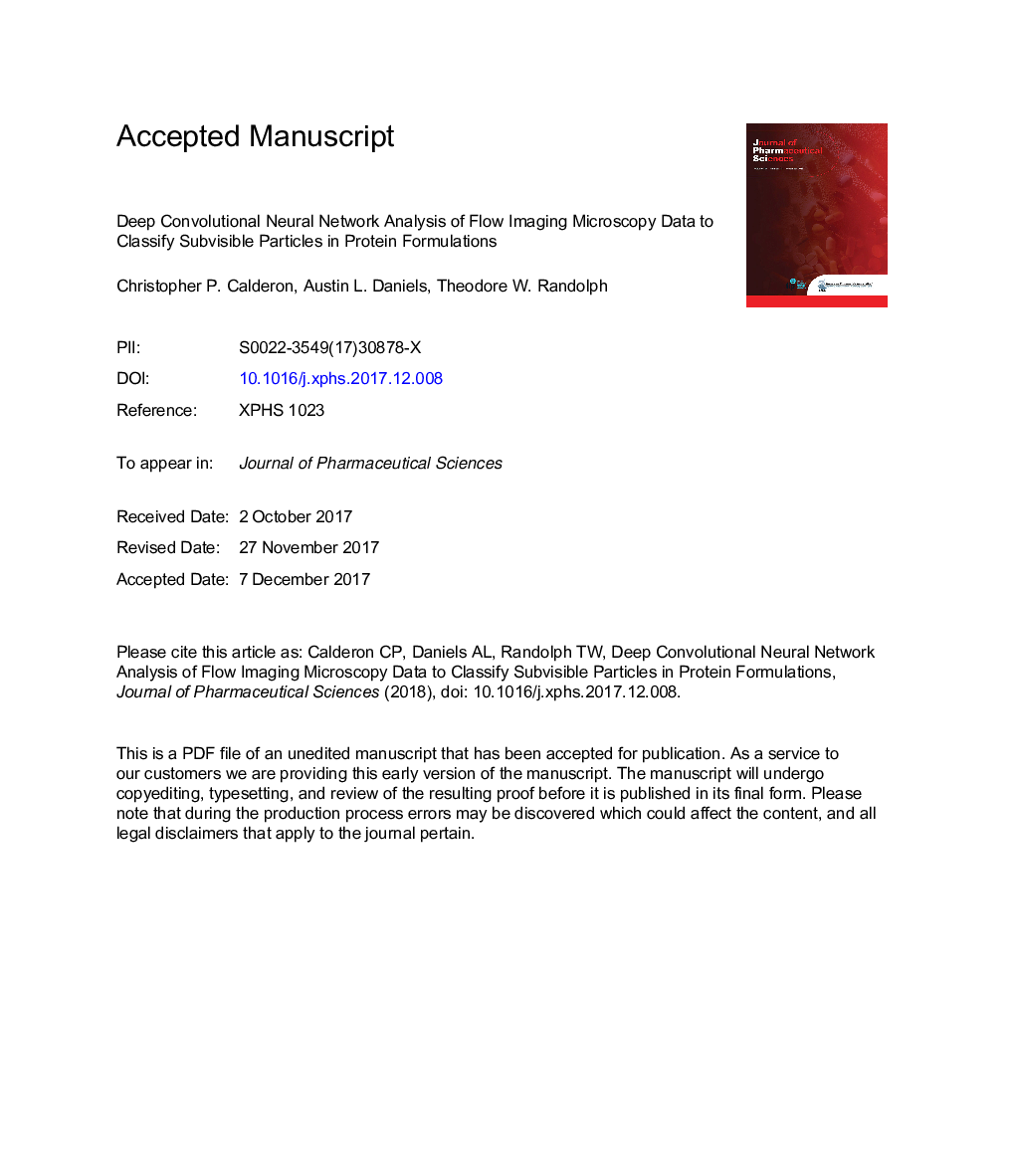| Article ID | Journal | Published Year | Pages | File Type |
|---|---|---|---|---|
| 8513361 | Journal of Pharmaceutical Sciences | 2018 | 27 Pages |
Abstract
Flow-imaging microscopy (FIM) is commonly used to characterize subvisible particles in therapeutic protein formulations. Although pharmaceutical companies often collect large repositories of FIM images of protein therapeutic products, current state-of-the-art methods for analyzing these images rely on low-dimensional lists of “morphological features” to characterize particles that ignore much of the information encoded in the existing image databases. Deep convolutional neural networks (sometimes referred to as “CNNs or ConvNets”) have demonstrated the ability to extract predictive information from raw macroscopic image data without requiring the selection or specification of “morphological features” in a variety of tasks. However, the inherent heterogeneity of protein therapeutics and optical phenomena associated with subvisible FIM particle measurements introduces new challenges regarding the application of ConvNets to FIM image analysis. We demonstrate a supervised learning technique leveraging ConvNets to extract information from raw images in order to predict the process conditions or stress states (freeze-thawing, mechanical shaking, etc.) that produced a variety of different protein particles. We demonstrate that our new classifier, in combination with a “data pooling” strategy, can nearly perfectly differentiate between protein formulations in a variety of scenarios of relevance to protein therapeutics quality control and process monitoring using as few as 20 particles imaged via FIM.
Related Topics
Health Sciences
Pharmacology, Toxicology and Pharmaceutical Science
Drug Discovery
Authors
Christopher P. Calderon, Austin L. Daniels, Theodore W. Randolph,
